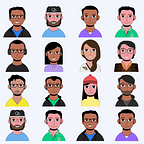No-Code ML Guide
Addressing the Lack of Data Literacy in Your Company
Before tools like Obviously AI came along businesses knew how to collect data, but making sense of it was another story.
Before tools like Obviously AI came along businesses knew how to collect data, but making sense of it was another story. In the age of micro-inspection of our data you can pinpoint what a customer will do and when they will do it with great accuracy- only if you know how to make sense of your data.
A lack of data literacy is a problem for most non-technical employees. For most companies, data collection has been rather easy. Especially now with POS systems and ubiquitous analytical software you can see weird charts and numbered graphs, but what to do with your data is more difficult to understand.
Unless you address the lack of data literacy in your company.
Why We Are So Bad at Reading Data
The number one reason might be data science isn’t democratized. While a way to democratize it is to spread the knowledge of data literacy, but also to understand it’s not your fault.
According to Harvard Business Review,
“Schools and colleges are often ill-equipped to solve the problem of data literacy. Math curricula prioritize critical core concepts (calculus and algebra) above more applied subjects like statistics and probability. Campaigns for greater pragmatism — like this 20-year-old paper — have gone largely unheeded.”
And if you had a head start on data analysis, the scope of tools and skills you need has changed over the last 10 years. Those who handle data must know SQL, data governance, how to insert AI into their tech stack, how to find results that are meaningful, and take action from what their data is telling them.
But, it’s not a lost cause for those brand new to data literacy.
Addressing How Your Business Reads Data
Going back to the democratization idea, if you’re a small business without a data science team, there may be one person in your whole office that handles machine learning. That means they’re probably getting a lot of technical questions from non-technical people in the marketing department, the HR department, the finance department, etc. and having to translate the findings into actionable insights for the whole company.
But, the whole machine learning process doesn’t have to be technical.
- Explore how your machine learning process can be improved
The one-person-handles-all approach isn’t sustainable and can lead to inaccurate insights. Can your ML process be improved simply with a non-technical tool?
Obviously, we are champions of no-code. With no-code tools anyone can use machine learning without having a background in machine learning. If you use a tool where the point of entry is not difficult, then more people can understand their data and use it more effectively.
2. Can your machine learning process be more transparent?
It can always be more transparent. Transparent ML equals more understanding and puts the data in context. If you discuss as a team what questions need to be answered and what data needs to go into your prediction, you can understand the outcomes. However, unless you are the data science team, your lack of data skills might hinder you. Don’t worry soft skills can go a long way in data.
3. Use the skills your team has and apply them to your approach to data
While your team might have a diverse background, that can actually be used to your advantage. Having a diverse team is encouraged to get a full understanding of what a data prediction means. If you are a creative team, you can build a story around your data, map customer journeys, or explore user research to create a big picture. If you’re a more scientific team, you can discuss hypotheses before exploring the data and compare data predictions and stats to your hypothesis. Also, don’t be afraid to collaborate with other teams. More eyes on the data and how it’s used will only benefit the transparency of the process.
4. Data Visualization is Key
If you can effectively create visualizations from your data, you can translate findings to other team members, leaders of your organization, and your customers.
If only there was a tool that could create interactive visualizations in under a minute with your data…
Using these 4 points, you can start to address the lack of data literacy in your organization. Remember, machine learning doesn’t have to be technical and hard to understand. By having a no-code tool like Obviously AI, you can easily understand what your data is telling you, create shareable graphs, export results, and take actions from your data predictions.
Get started addressing the lack of data literacy in your company with no-code machine learning.
Originally published at https://www.obviously.ai.
